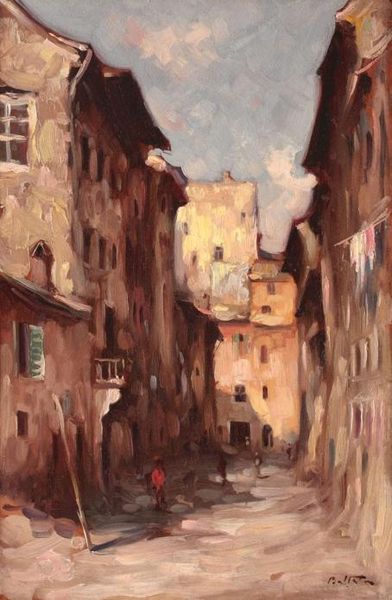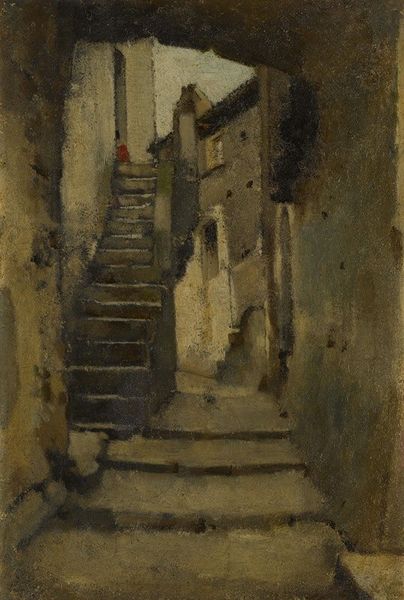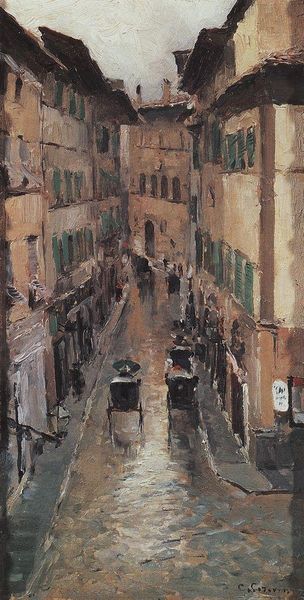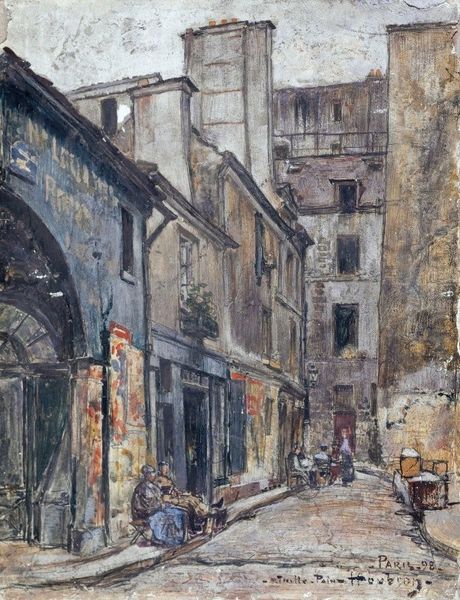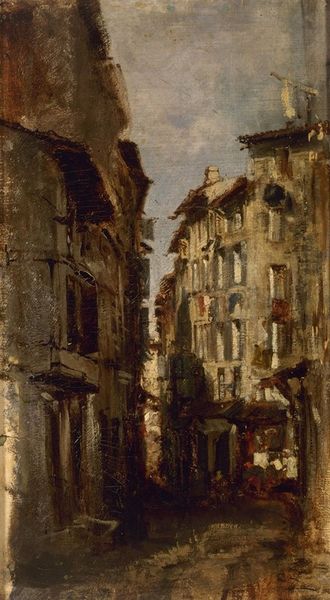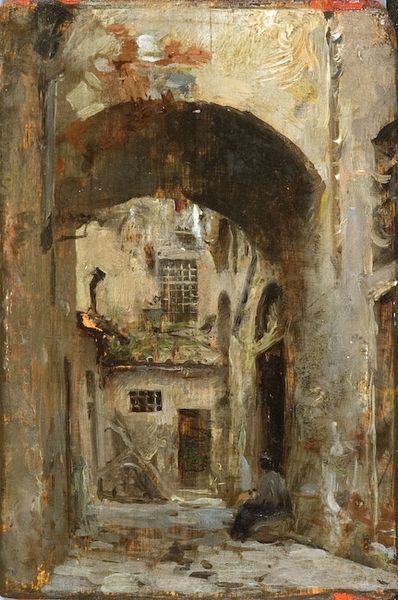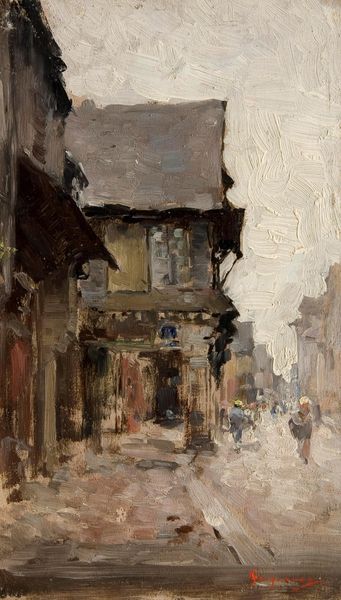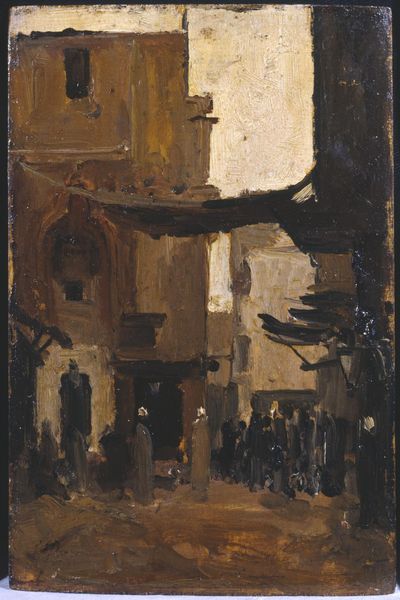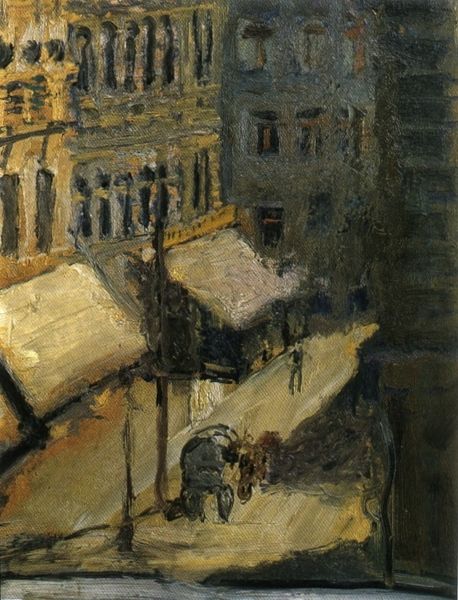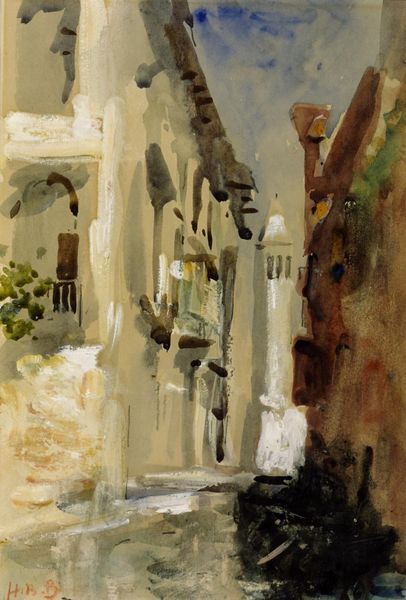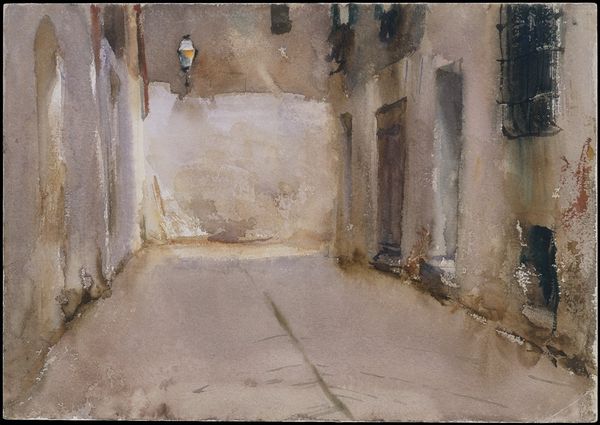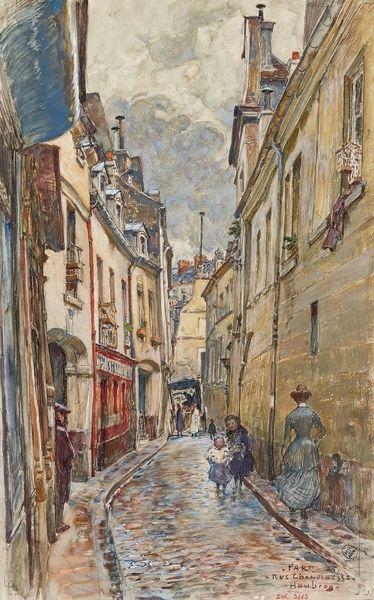
oil-paint
#
impressionism
#
oil-paint
#
landscape
#
oil painting
#
painterly
#
cityscape
#
genre-painting
Copyright: Public Domain: Artvee
Curator: Here we have Max Liebermann's "Venezianische Gasse nach rechts," painted in 1878. Liebermann captures a narrow Venetian alleyway using oil paint, a popular medium for the Impressionists. Editor: It feels claustrophobic. The tall buildings seem to lean in, and the color palette – all browns and muted greens – gives it a slightly oppressive atmosphere, doesn't it? Like the walls are closing in. Curator: Well, Liebermann, while later becoming a prominent figure in German Impressionism, was exploring realism early on. He focused on everyday scenes, on what he saw, absent of overt sentimentality or romanticizing. He presents this backstreet honestly. Editor: And yet, what does that “honesty” mean, framed within 19th-century realism? Whose reality are we seeing? Think about Venice – this wealthy port city that was decaying in front of their eyes, socially and economically, where marginalized classes suffered. Is this honesty, or an aesthetic choice, that almost feels voyeuristic, of a dark side of town? Curator: The interesting point, and what's Impressionistic in the application, are the painterly brushstrokes; and Liebermann isn't fixated on precise architectural detail. The light, although dim, glances off the walls creating visual interest and dissolving detail in favor of an overall atmospheric impression. Editor: Yes, it's definitely evocative in that way. Also consider how urban poverty often intersected with gender. Where were women, during this time, within these small streets? Who depended on these buildings and structures and lived here and survived, maybe uncomfortably so? I think that brings an additional and potentially complex lens. Curator: His focus shifts attention, in this work, to his individual response to a specific site in Venice. This city was increasingly an artistic and tourist site—Liebermann might've simply meant to provide another view for a contemporary audience that would have recognized its charm without further meaning. Editor: Perhaps! Though it’s interesting to reflect on how Liebermann positions the viewer – peering down an uninviting alley. To simply accept its superficial appeal overlooks potential anxieties. Curator: So, we started with an exploration of urban life in 19th century Venice through the artist’s vision, and finished considering implications of its broader significance. Editor: Which underscores art's role to encourage critical thinking and question easy interpretations.
Comments
No comments
Be the first to comment and join the conversation on the ultimate creative platform.
